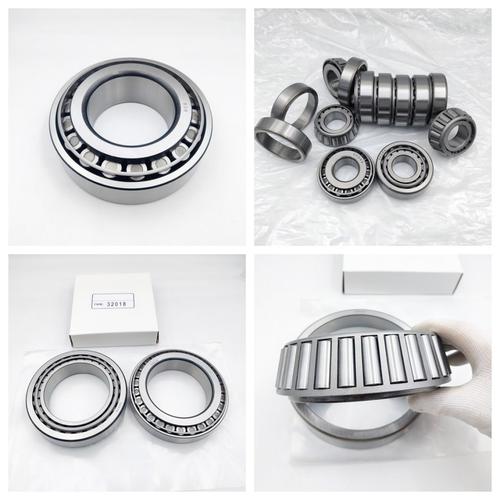Industrial Bearing Housing: Types, Installation, Maintenance, and Applications Guide
Industrial bearing housings are critical components in machinery systems, designed to support rotating shafts and protect bearings from contaminants. They ensure optimal alignment, reduce friction, and enhance equipment longevity across industries like manufacturing, energy, and automotive. Constructed from materials like cast iron or stainless steel, these housings adapt to diverse operational demands.
1. industrial bearing housing types2. how to install bearing housing
3. maintenance of bearing housing
4. industrial bearing housing materials
5. bearing housing applications
1. industrial bearing housing types

Industrial bearing housings come in various designs to accommodate specific operational needs. Pillow block housings, also known as plummer blocks, are widely used for their ease of installation and ability to handle moderate loads. Flange housings provide rigid mounting for high-speed applications, while split housings simplify maintenance by allowing easy access to bearings. Take-up housings adjust belt tension in conveyor systems, and cartridge housings offer pre-assembled units for quick replacement. Each type balances load capacity, environmental resistance, and alignment precision. Selecting the right housing depends on factors like shaft size, temperature, and exposure to moisture or dust. Engineers must evaluate industry standards (e.g., ISO or ANSI) to ensure compatibility with existing machinery components.
2. how to install bearing housing
Proper installation of bearing housings ensures optimal performance and longevity. Begin by cleaning the shaft and housing bore to remove debris. Apply a thin layer of lubricant to the shaft and bearing seat. Align the housing base with the mounting surface, using shims if necessary to correct unevenness. Tighten bolts gradually in a cross pattern to avoid distortion. For split housings, ensure the cap and base fit snugly without forcing components. Verify radial and axial clearances using dial indicators. Thermal installation methods may be required for interference fits—heat the housing to 80-120°C before sliding it onto the shaft. Always follow torque specifications provided by the manufacturer to prevent over-tightening, which can cause bearing brinelling or housing cracks.
3. maintenance of bearing housing
Regular maintenance extends the service life of industrial bearing housings. Conduct monthly inspections for signs of wear, corrosion, or lubricant leakage. Use ultrasonic detectors to identify early-stage bearing failures. Relubricate bearings according to the manufacturer’s schedule, purging old grease to prevent contamination. Check seal integrity—damaged seals allow dirt ingress, accelerating wear. Monitor housing temperature with infrared thermometers; abnormal heat often indicates misalignment or overloading. For cast iron housings, apply rust inhibitors in humid environments. Replace worn locking collars or adapter sleeves promptly to maintain shaft stability. Implement vibration analysis programs to detect imbalances before they cause catastrophic failures. Always use compatible lubricants and avoid mixing grease types, which can lead to chemical breakdown and reduced performance.
4. industrial bearing housing materials
Material selection directly impacts housing durability and application suitability. Cast iron (Grade G25) remains popular for its vibration-damping properties and cost-effectiveness in general-purpose uses. Stainless steel (AISI 304/316) housings resist corrosion in chemical or marine environments. For lightweight applications, aluminum housings offer excellent heat dissipation but lower load capacity. Thermoplastic housings, such as PEEK or PTFE, excel in food processing due to their non-reactive surfaces. Ductile iron provides higher strength for heavy-duty mining equipment. Specialized coatings like zinc-nickel plating enhance wear resistance in high-abrasion settings. Engineers must consider thermal expansion coefficients—aluminum expands 50% more than steel at 100°C—to prevent fit issues. Material certifications (e.g., ASTM A48 for cast iron) ensure compliance with industry safety standards.
5. bearing housing applications
Bearing housings serve critical roles across industries. In wind turbines, they support main shaft rotations under variable loads and weather conditions. Food processing lines use stainless steel housings with washdown capabilities to meet hygiene standards. Mining conveyors rely on heavy-duty housings with dust seals to handle abrasive materials. HVAC systems utilize compact housings for fan motor efficiency. Paper manufacturing requires housings resistant to steam and chemical exposure. Automotive assembly lines employ precision housings for robotic arm articulation. Recent trends include IoT-enabled smart housings with embedded sensors for real-time temperature and vibration monitoring. Custom designs address unique challenges, such as high-vacuum environments in semiconductor manufacturing or subsea oil rigs operating at 3,000-meter depths.
Understanding industrial bearing housing fundamentals—from material science to application-specific designs—empowers engineers to optimize machinery performance. This guide has explored key aspects like installation protocols, maintenance strategies, and industry innovations. Whether you’re selecting corrosion-resistant housings for chemical plants or implementing predictive maintenance in wind farms, each decision impacts operational efficiency. Continue reading to discover advanced techniques for housing alignment, lubrication optimization, and failure mode analysis. Mastery of these topics reduces downtime, cuts costs, and ensures compliance with evolving industrial safety regulations.
In summary, industrial bearing housings are indispensable for modern machinery systems. By choosing appropriate types, adhering to precise installation methods, and executing proactive maintenance, businesses can achieve superior equipment reliability. Stay informed about material advancements and IoT integration to maintain competitive advantage in your industry.




 13869596835
13869596835